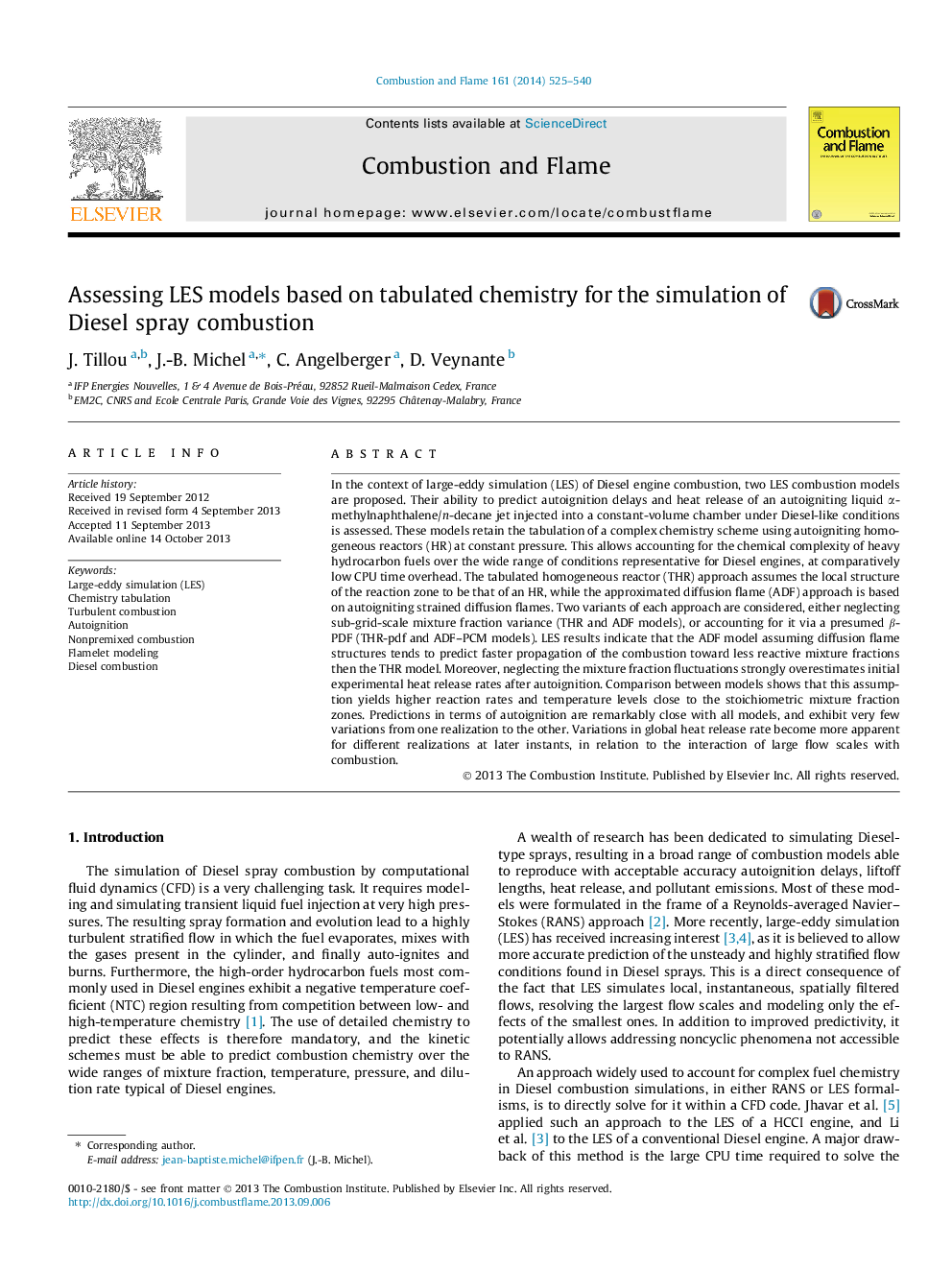| کد مقاله | کد نشریه | سال انتشار | مقاله انگلیسی | نسخه تمام متن |
|---|---|---|---|---|
| 169020 | 457972 | 2014 | 16 صفحه PDF | دانلود رایگان |

In the context of large-eddy simulation (LES) of Diesel engine combustion, two LES combustion models are proposed. Their ability to predict autoignition delays and heat release of an autoigniting liquid α-methylnaphthalene/n-decane jet injected into a constant-volume chamber under Diesel-like conditions is assessed. These models retain the tabulation of a complex chemistry scheme using autoigniting homogeneous reactors (HR) at constant pressure. This allows accounting for the chemical complexity of heavy hydrocarbon fuels over the wide range of conditions representative for Diesel engines, at comparatively low CPU time overhead. The tabulated homogeneous reactor (THR) approach assumes the local structure of the reaction zone to be that of an HR, while the approximated diffusion flame (ADF) approach is based on autoigniting strained diffusion flames. Two variants of each approach are considered, either neglecting sub-grid-scale mixture fraction variance (THR and ADF models), or accounting for it via a presumed β-PDF (THR-pdf and ADF–PCM models). LES results indicate that the ADF model assuming diffusion flame structures tends to predict faster propagation of the combustion toward less reactive mixture fractions then the THR model. Moreover, neglecting the mixture fraction fluctuations strongly overestimates initial experimental heat release rates after autoignition. Comparison between models shows that this assumption yields higher reaction rates and temperature levels close to the stoichiometric mixture fraction zones. Predictions in terms of autoignition are remarkably close with all models, and exhibit very few variations from one realization to the other. Variations in global heat release rate become more apparent for different realizations at later instants, in relation to the interaction of large flow scales with combustion.
Journal: Combustion and Flame - Volume 161, Issue 2, February 2014, Pages 525–540